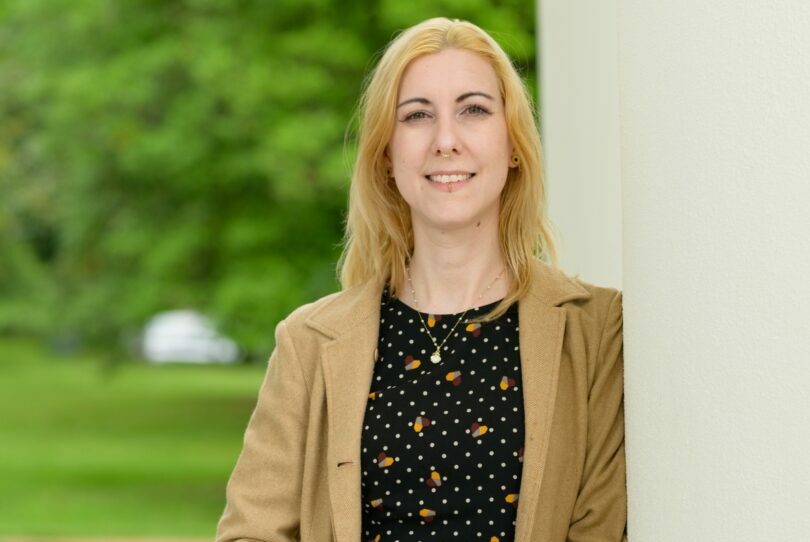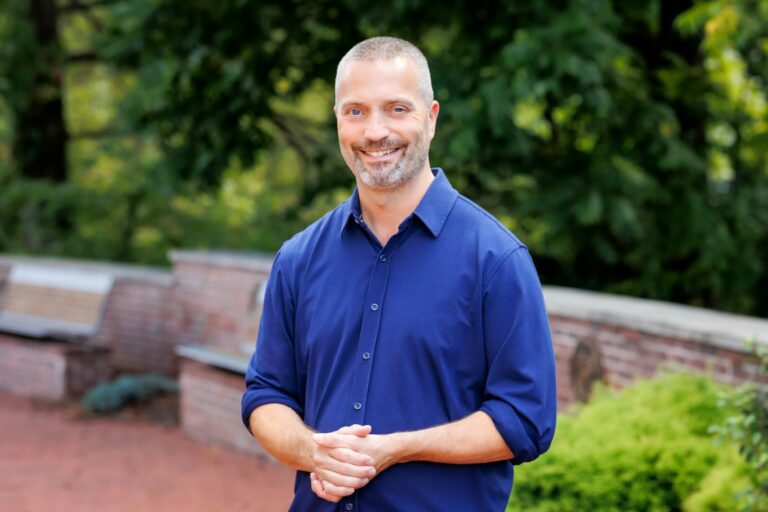We were lucky to catch up with Shelli Langdale recently and have shared our conversation below.
Hi Shelli, appreciate you sitting with us today to share your wisdom with our readers. So, let’s start with resilience – where do you get your resilience from?
Resilience, for me, hasn’t arrived through singular triumphs or clean breaks. It looks less like a turning point and more like a series of recursive life pivots—transitions that loop back on themselves, where what was once left behind quietly re-emerges as foundational. A former engineer steps away from systems and networks to become a painter, only to find that structure, constraint, and inquiry still quietly govern the studio. The pivot doesn’t reject the past; it reconfigures it. Each shift becomes a revision, not a reset.
Resilience has looked less like grit and more like recalibration: a looping process of departure, return, and quiet adaptation. I’ve rebuilt my life more than once, not by discarding who I was but by carrying that version forward in altered form. There hasn’t been a single moment of breakthrough. No cinematic turn. Just a pattern of staying with the thing long enough to learn what else it could become.
I tend to work inward. I prefer long-form thought, solitude, and environments where reflection outpaces reaction. That’s not to say resilience has come from being stoic—it hasn’t. But I’ve learned that endurance isn’t always loud. Sometimes it looks like tending to what’s necessary without needing to justify it. Sometimes it’s watching the same sci-fi series for the third time because it resets the atmosphere.
After a profound loss, I noticed something peculiar. While others wished dreary days away, I welcomed them. Overcast skies, cold rain—they brought back the season I spent walking beside a horse I loved through recovery. He was in pain, and I had nowhere else I wanted to be. That time shaped how I engage with discomfort—not with detachment, but with care. I started noticing everything more: light patterns, small sounds, subtle changes in the landscape. That kind of attention stayed with me.
Curiosity is a quiet engine. It’s what keeps me working, even when the larger purpose feels unclear. Not curiosity for its own sake, but the kind that emerges when repetition meets observation. A willingness to look again. To ask small questions. To follow a thread, even when the outcome isn’t guaranteed.
Resilience, for me, has meant learning how to remain—inside uncertainty, inside effort, inside care. To improvise without spectacle. To continue when no one’s watching. Not because there’s a promise on the other side, but because the practice itself still feels worth doing.

Let’s take a small detour – maybe you can share a bit about yourself before we dive back into some of the other questions we had for you?
I’m an artist and former NASA engineer making paintings rooted in science and science fiction. My work explores memory, transformation, and the quiet liminal spaces where identity shifts. Recently, I launched a Substack publication called Dispatches from the Liminal Bathroom, a title that nods to those strange in-between moments when ideas surface unexpectedly. The publication is a space for fieldnotes, reflections, and the internal monologues that help me understand what I’m making and why. What makes it exciting is that it resists urgency. It honors slowness, reflection, and emergence, especially in a culture that rewards speed and certainty. It’s not a behind-the-scenes—it is the scene, reframed through liminal attention. And in sharing these fieldnotes with vulnerability and humor, I hope it makes space for others navigating change in their own lives.

There is so much advice out there about all the different skills and qualities folks need to develop in order to succeed in today’s highly competitive environment and often it can feel overwhelming. So, if we had to break it down to just the three that matter most, which three skills or qualities would you focus on?
I come from an engineering background, so systems thinking was second nature. That habit didn’t disappear when I moved into painting; it just changed shape. Recognizing patterns, whether in process, in self, or in material, became foundational. It teaches you to hear what keeps repeating, what’s emerging, and what still needs refinement. If you’re early on your path, it helps to pay attention to your patterns, not just your progress.
Empathy is often about staying present when someone else is in pain, even when there’s nothing you can do to change it. One of the clearest experiences I’ve had with that was walking beside a horse I loved during months of recovery. It helped shape how I work now, in the studio and elsewhere. Care, at its most honest, isn’t performative. It’s quiet, observational, and often private.
Attention is also a medium. What I notice—and how I notice it—shapes everything: the work, the pace, the meaning. Some of the most consequential moments in my process come from small, private rituals. Attention isn’t about intensity. It’s about fidelity. That’s what I try to tend.

How can folks who want to work with you connect?
I’m open to collaboration, even if I’m not sure yet what shape it might take. I haven’t collaborated before, but I’m interested in working with others—writers, musicians, painters, scientists, or anyone exploring ideas with curiosity and intention. What draws me in is a shared interest in process and the questions that surface along the way. If this sounds like you, feel free to reach out through my Substack, Dispatches from the Liminal Bathroom (shellilangdale.substack.com). I’d love to see what might unfold.
Contact Info:
- Website: https://shellilangdale.com
- Instagram: @shellilangdale
- Linkedin: https://www.linkedin.com/in/shellilangdale
- Other: Substack: shellilangdale.substack.com
Threads: @shellilangdale
Bluesky: @oustcat.bsky.social


Image Credits
Shelli Langdale
so if you or someone you know deserves recognition please let us know here.




